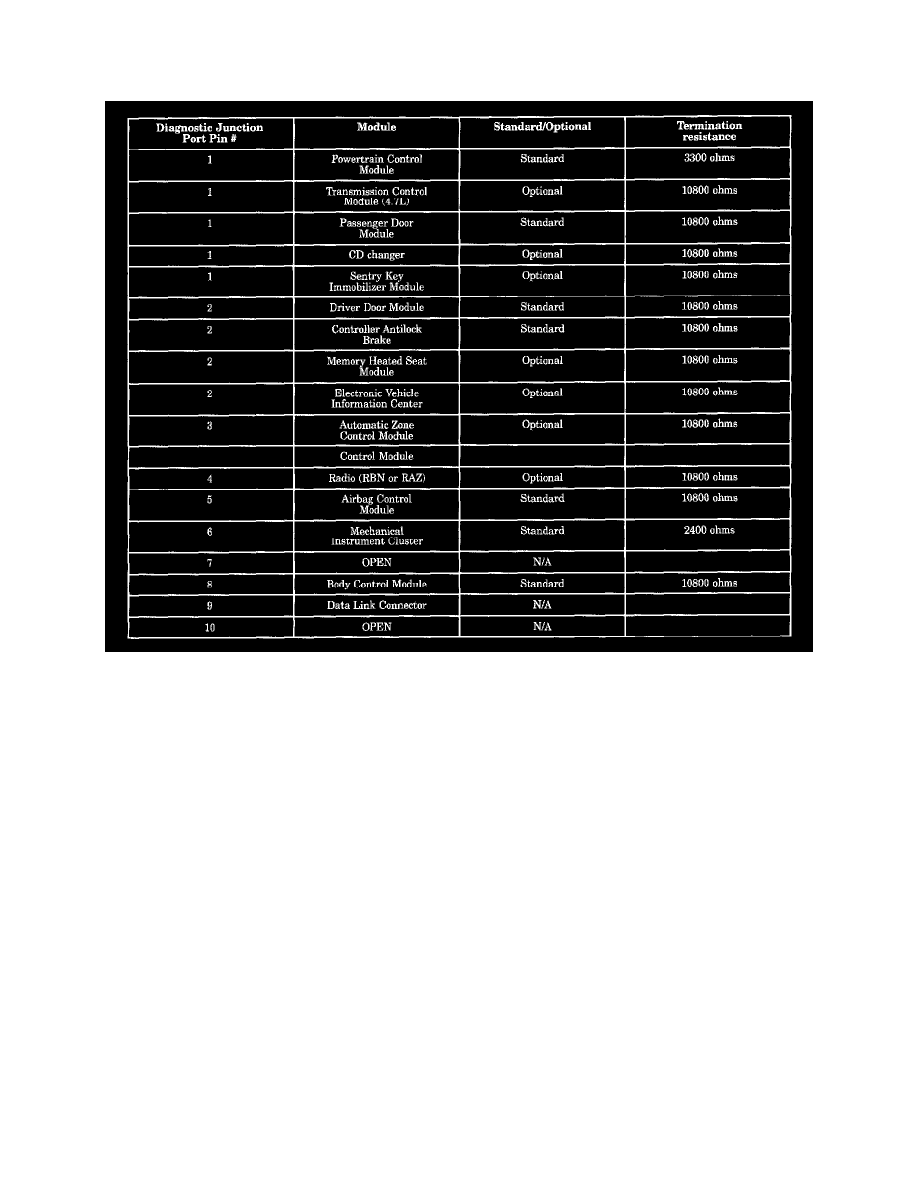Grand Cherokee 2WD V8-4.7L VIN N (2000)

Symptoms of Individual module failure could include any one or more of the above. The difference would be that at least one or more modules
would respond to the DRBIII (R).
Diagnosis starts with symptom identification. If complete PCI Bus Communication Failure is suspected, begin by identifying which modules the
vehicle is equipped with and then attempt to get a response from the modules with the DRBIII (R). If any modules are responding, the failure is
not related to the total bus, but can be caused by one or more modules PCI circuit or power supply and ground circuits. The DRBIII (R) may
display "BUS +/- SIGNAL OPEN" or "NO RESPONSE" to indicate a communication problem. These same messages will be displayed if the
vehicle is not equipped with that particular module. The CCD error message is a default message used by the DRBIII (R) and in no way indicates
whether or not the PCI bus is operational. The message is only an indication that a module is either not responding or the vehicle is not equipped.
Refer to the application table for a list of standard and optional modules and their respective Diagnostic Junction Port pin assignments.
VEHICLE THEFT SECURITY SYSTEM
This passive system is designed to protect against vehicle theft. The Vehicle Theft Security System (VTSS) is part of the body control module,
which monitors vehicle doors, liftgate, liftglass and the ignition for unauthorized operation. The alarm activates by sounding the horn, flashing the
head-lamps, hazard lamps, and the VTSS indicator lamp. The VTSS does not prevent engine operation, this is done with the sentry key
immobilizer module. Passive arming occurs upon normal vehicle exit by turning the ignition OFF, opening the driver's door, locking the doors
with the power lock, and closing the driver's door or locking the doors with RKE. The indicator lamp on the dash will flash for 15 seconds,
showing that arming is in progress. If no monitored systems are activated during this period, the system will arm and the indicator will flash at a
slow rate. When something triggers the alarm, the system will signal the headlamps, park lamps, and horn for about 18 minutes.
For complaints about the Theft Alarm going OFF on it's own, use the DRBIII (R) and select "Theft Alarm", "VTSS" then "Monitor Display" and
read the "Alarm Tripped By" status.
Tamper Alert - The VTSS tamper alert will sound the horn three times upon disarming to indicate a tamper condition has occurred.
Manual Override- The system will not arm if the doors are locked using the manual lock control (by hand) or if the locks are actuated by an inside
occupant after the door is closed.
To verify the system, proceed as follows:
1. Open the driver's door.
2. Remove the ignition key (but keep it in hand).
